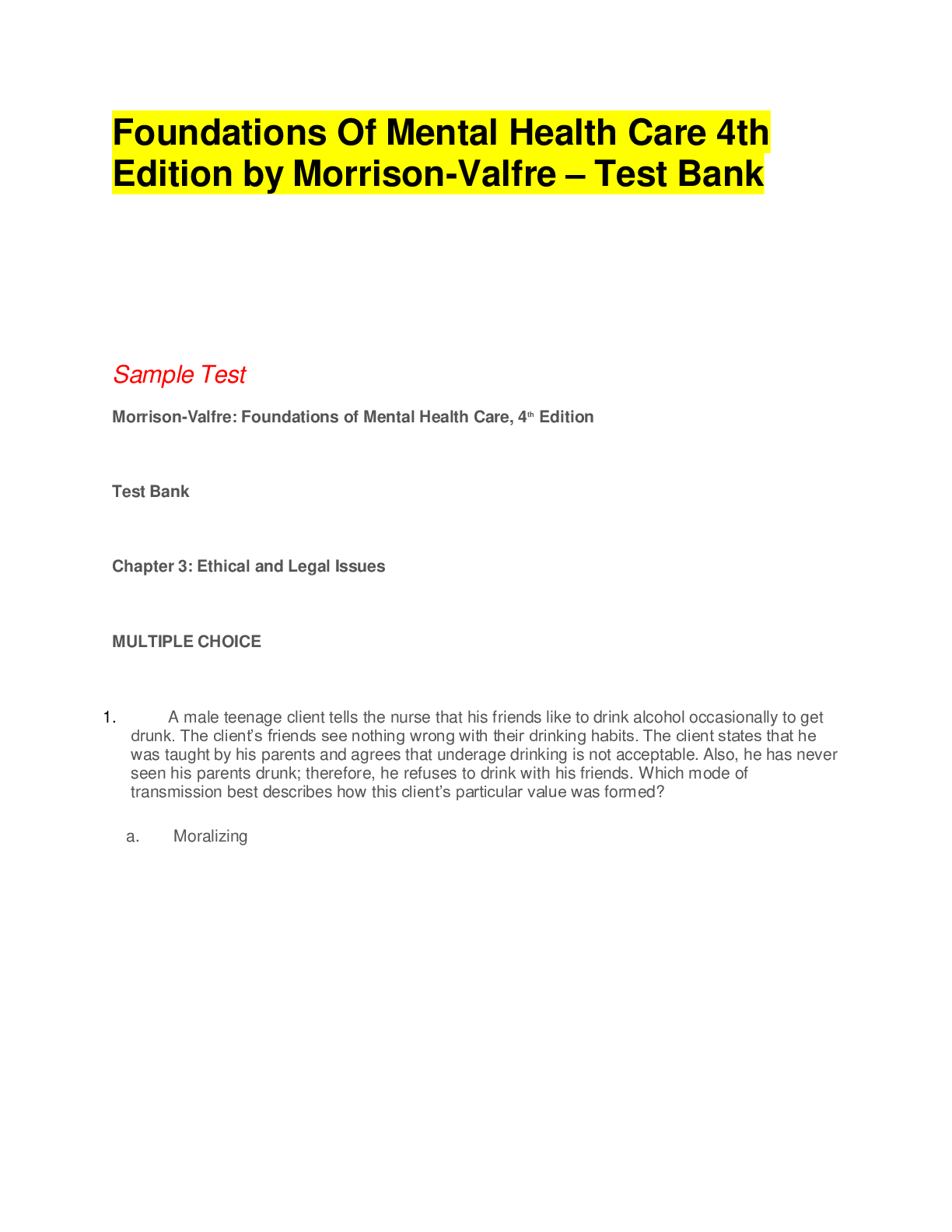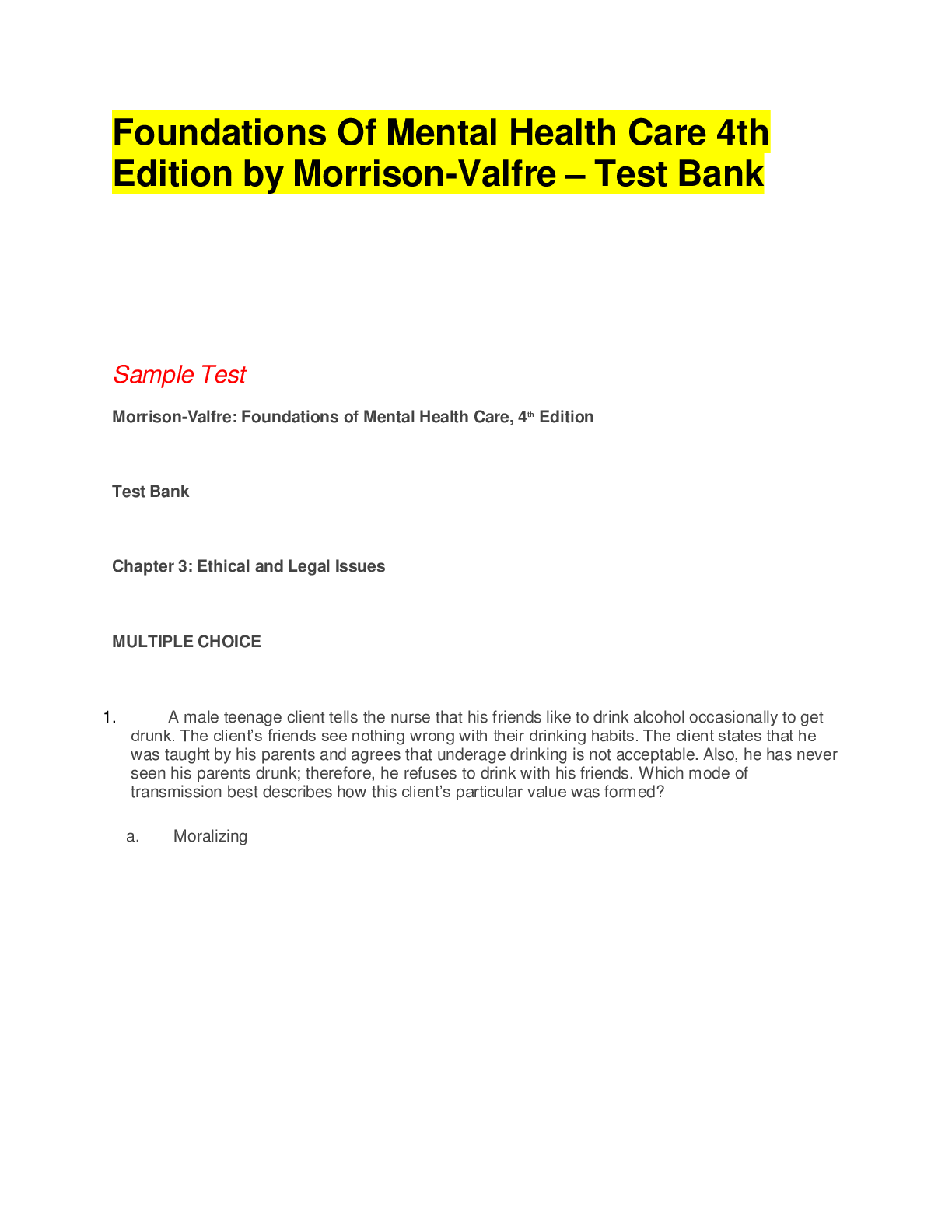Foundations Of Mental Health Care 4th Edition by Morrison-Valfre – Test Bank
Course
Project Management
Subject
Chemistry
Category
Questions and Answers
Pages
30
Uploaded By
ATIPROS
Preview 5 out of 30 Pages


Download all 30 pages for $ 10.00
Reviews (0)
$10.00
